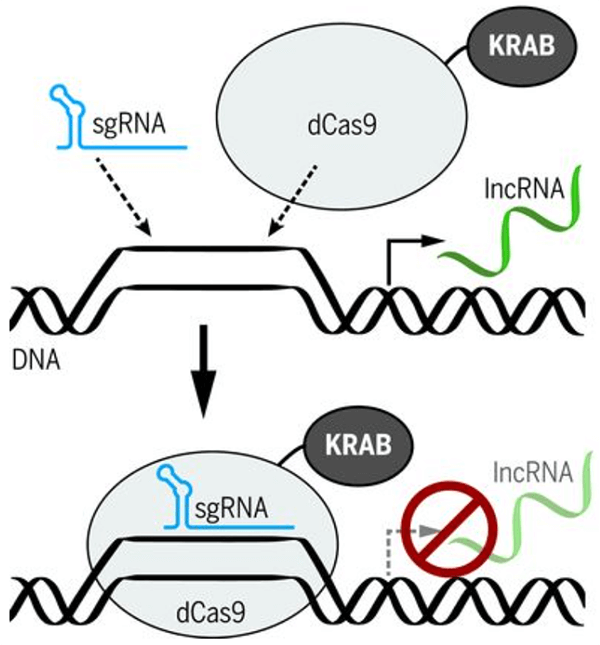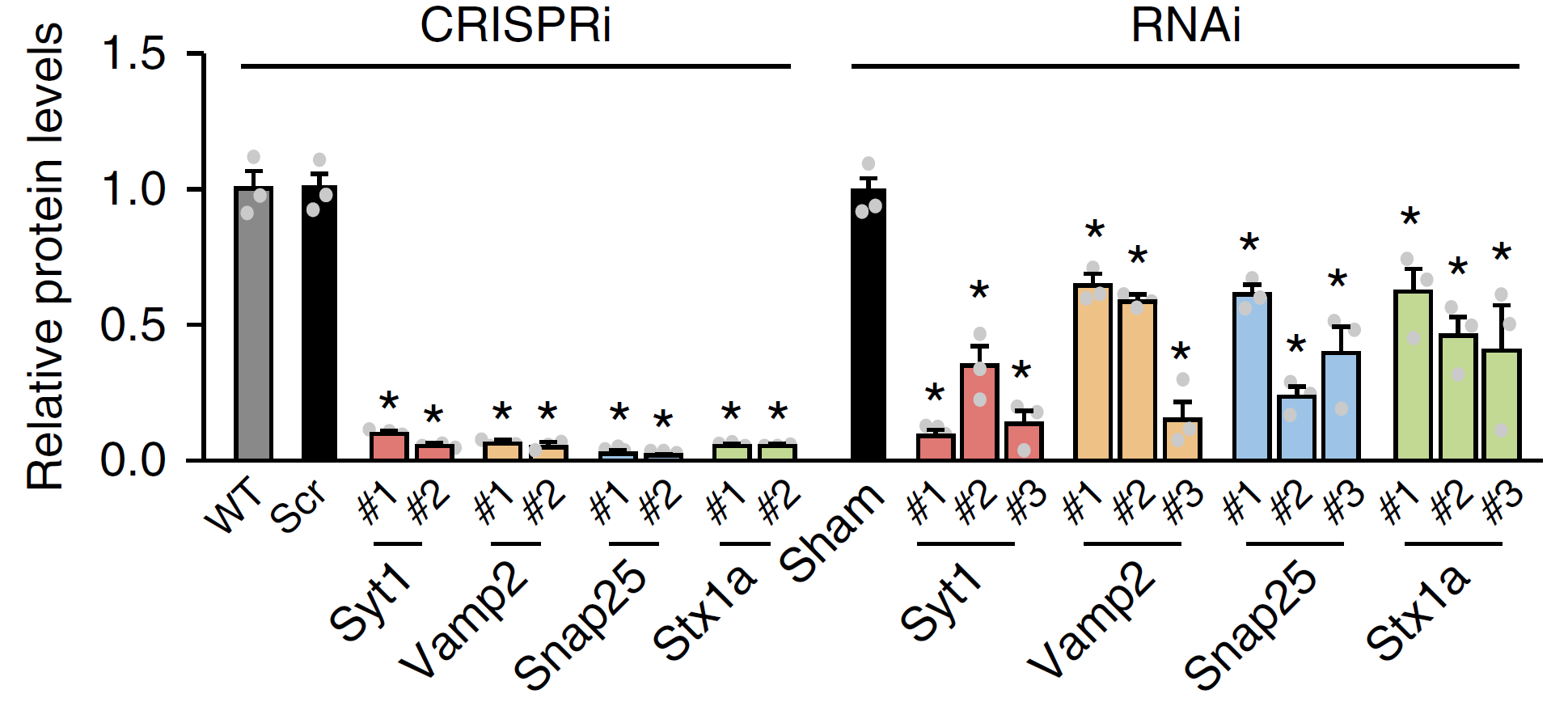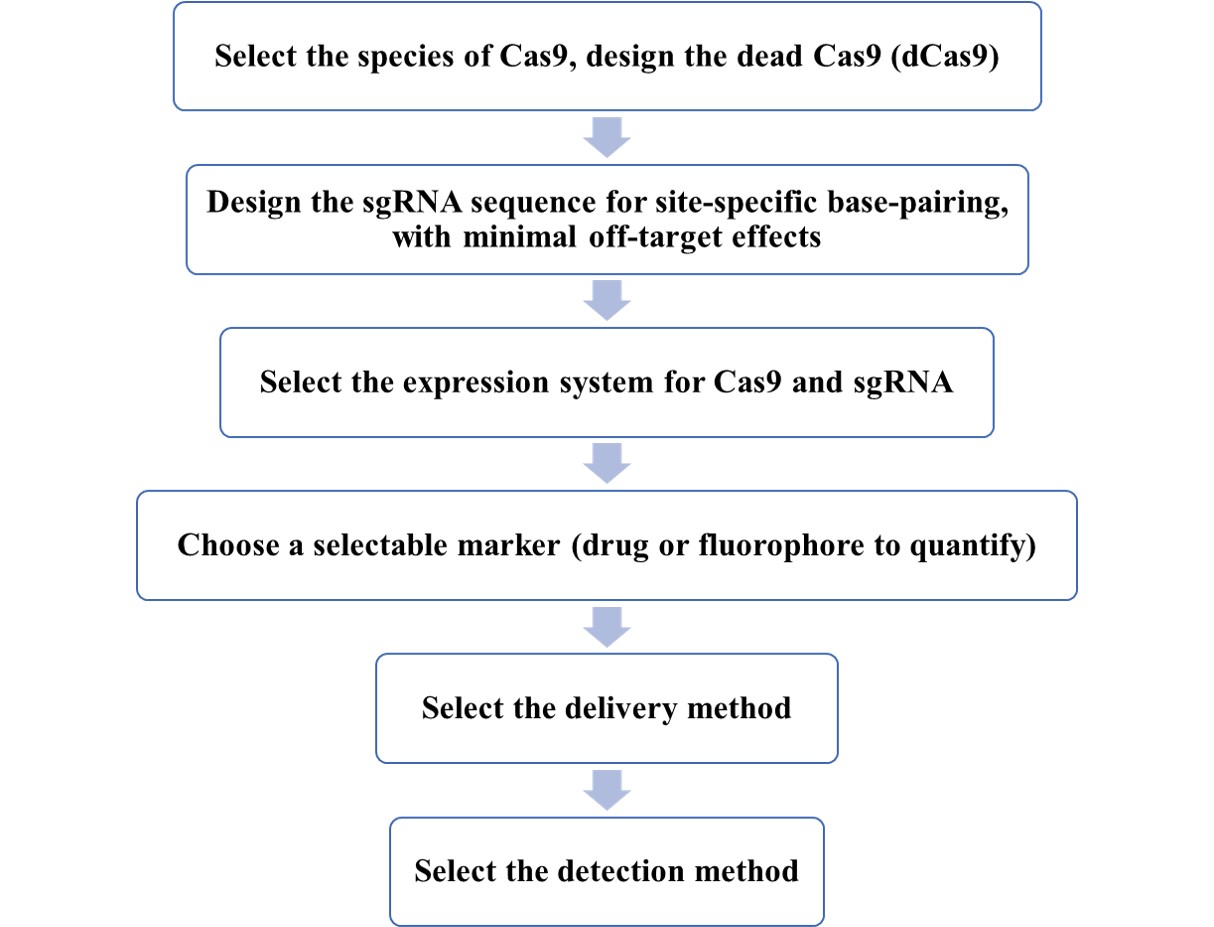DNA is the genetic material of most organisms, and its various physiological processes, especially the process of transcribing mRNA, are regulated by strict signal pathways. In the field of RNA research, the miRNA that naturally exists in cells allows researchers to inhibit or degrade specific mRNA sequences to achieve gene knockdown. In the field of DNA research, for a long time in the past, due to the lack of right tools to bind DNA, researchers cannot regulate specific genome sequences.
The emergence of the CRISPR/Cas9 system gives researchers a powerful gene editing tool. It also provides us a DNA binding tool with extremely powerful transformation capabilities. By bringing different functional elements to dCas9/sgRNA, we can perform various manipulations on the genome sequence, such as regulating gene transcription, regulating epigenetic modification, and genome positioning imaging.
 Figure 1. CRISPRi-mediated gene silencing
Figure 1. CRISPRi-mediated gene silencing
Compared with the previous generation of gene knockdown technology RNAi, CRISPRi has several advantages: CRISPRi uses exogenous elements to inhibit gene transcription, while RNAi needs to rely on the cell's own RISC complex, so RNAi is more susceptible to cells than CRISPRi. In addition, the inhibitory effect of CRISPRi is better than RNAi, and the ability of siRNA to bind to the target RNA is not strong, which leads to a relatively high tolerance for base mismatches in siRNA and is prone to off-target phenomena. CRISPRi's gene knockdown is the cleanest compared to other technologies. Except for the target gene, no other genes are significantly interfered (Fig.2).
 Figure 2. The knockdown effect of CRISPRi is generally better than RNAi (Zheng et al. 2018)
Figure 2. The knockdown effect of CRISPRi is generally better than RNAi (Zheng et al. 2018)
Lifeasible has been deeply involved in the field of plant gene editing in recent years and has achieved some remarkable results. Our gene editing technology and services can help customers advance projects and experiments, and obtain plants with excellent traits for customers.
As a branch of CRISPR technology, the dCas9 system has great development potential. The two ends of the Cas9 protein can be fused with any functional elements, and its function of binding and cutting DNA has almost no effect. It is very suitable for modification, so it has been widely used in regulating gene transcription in recent years.
The process of knocking down the target gene of the target cell is as follows. The dCas9 after two enzyme active site mutations can stably bind to the target DNA, and only its steric hindrance can inhibit the transcription process of the target gene. In addition, dCas9 can form with other proteins. The fusion protein binding near the gene transcription start site can also achieve the knockdown of the target gene. For example, in the study of the E. coli KOX1 gene, through the dCas9-KRAB fusion protein binding near the gene transcription start site (TSS), KRAB can Recruit histone modifiers to form heterochromatin, effectively inhibit gene transcription at the binding site, and achieve knockdown of target genes.

CRISPRi technology in plants is considered to be a promising gene regulation method in functional genomics due to its high specificity, high efficiency, high success rate, and high stability. It can be used without affecting other genes and down-regulate the expression of target genes in a precise manner.
CRISPRi is of great significance for the maintenance of genome integrity, growth and development of plants. It can be used to inhibit defective genes and undesirable genes that affect crop economic traits, to realize crop variety improvement. By cultivating excellent varieties with disease resistance, environmental stress tolerance, and high yield, it opens up new ways for crop improvement.
Lifeasible has been deeply researching the field of gene editing for many years. Our team has experienced experts who are constantly developing new technologies. Currently, we have many new breakthroughs such as tissue culture-free genetic transformation using nanomaterials as carriers in the field of plant gene editing. We believe that our advanced technology and professional attitude can fully meet the needs of our customers, for inquiries, please contact Lifeasible.
Reference